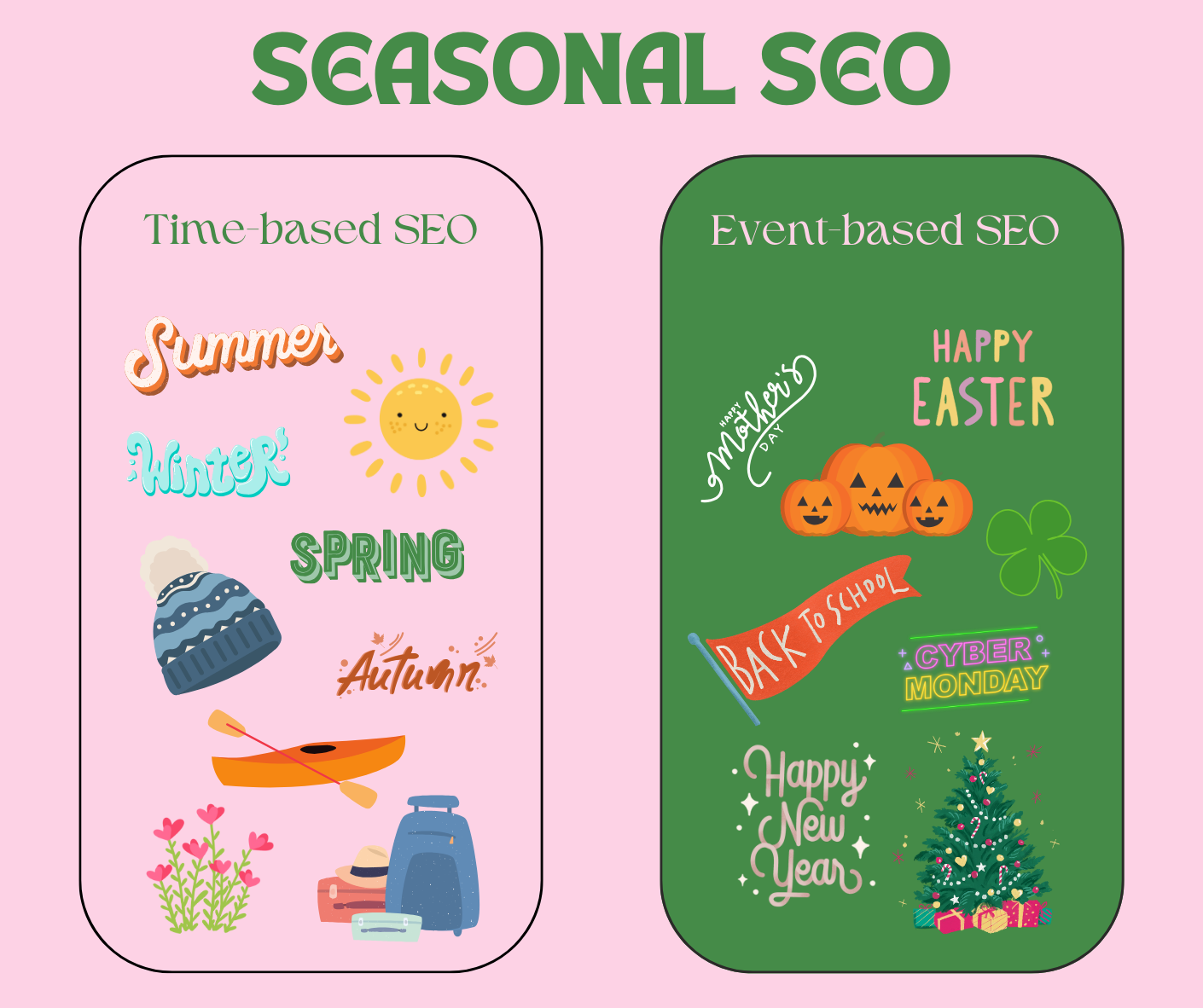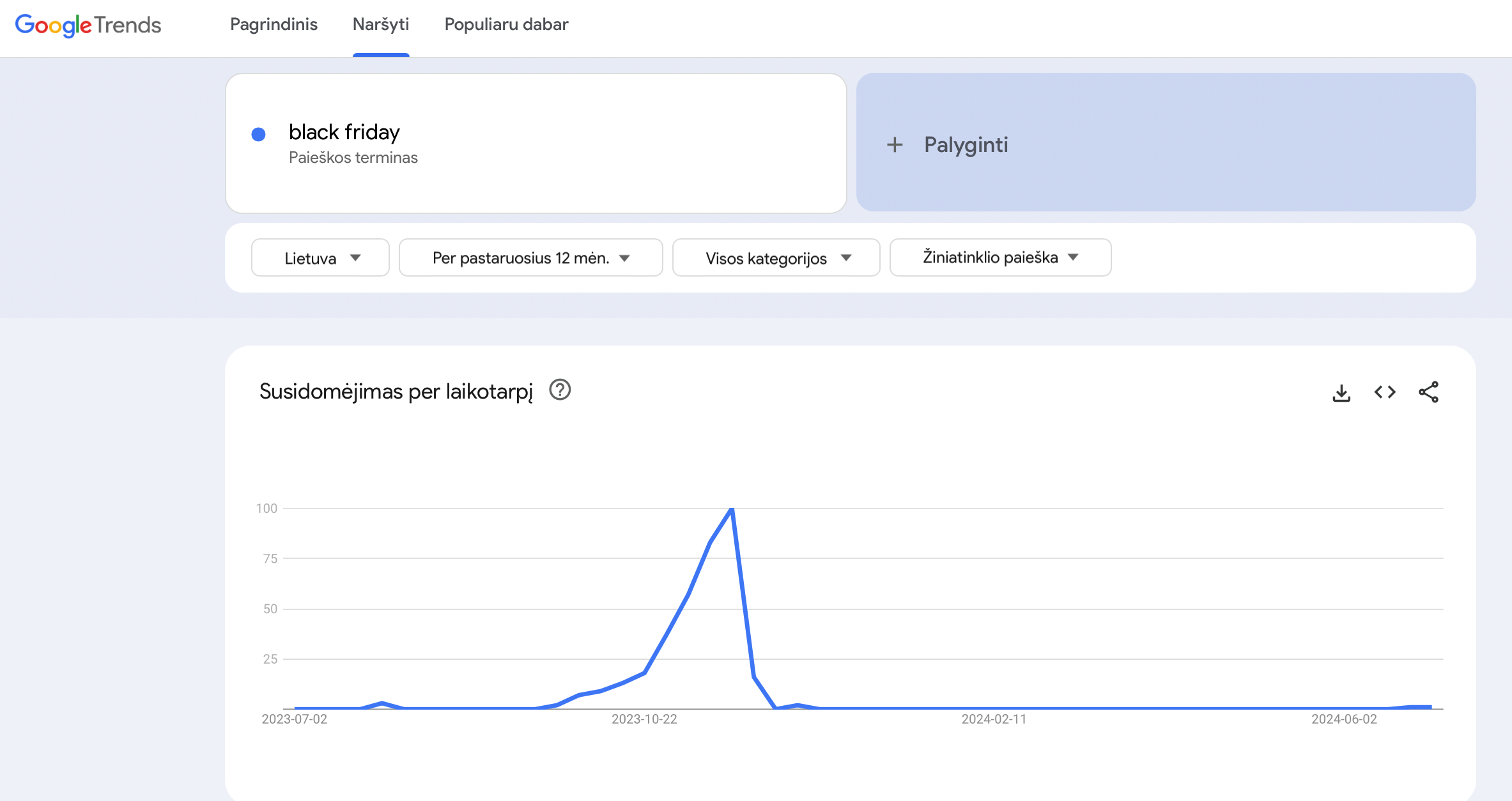In the ever-evolving landscape of digital marketing, optimizing your website for search engines is crucial. However, while standard SEO strategies are essential for maintaining steady traffic, implementing seasonal SEO can significantly boost your visibility during peak periods.
Seasonal SEO refers to the practice of adjusting your SEO tactics to align with specific times of the year when your target audience is most active. This approach ensures that your website ranks higher during high-traffic seasons, driving more visitors and potentially increasing conversions. In this blog post, we'll explore the concept of seasonal SEO, delve into effective strategies, and demonstrate how to capitalize on peak seasons to maximize your traffic.
- Understanding Seasonal SEO
- Effective Seasonal SEO Strategies
- Implementing Seasonal SEO in Your Marketing Plan
Understanding Seasonal SEO
What is Seasonal SEO?
Seasonal SEO involves tailoring your SEO efforts to reflect seasonal trends and consumer behavior. Unlike general SEO, which focuses on maintaining a consistent presence, seasonal SEO aims to capture spikes in traffic by leveraging specific keywords, content, and promotional tactics relevant to particular times of the year. This can include holidays, events, or seasonal changes that affect consumer purchasing patterns.
There are two primary categories of seasonal SEO strategies, according to WebFX:
- Time-based SEO: This strategy focuses on extended periods throughout the year, such as specific seasons like spring or autumn, or distinct timeframes like an entire month.
- Event-based SEO: This approach targets particular events that drive consumer purchases. Examples of event-based SEO include occasions like Easter, back-to-school season, New Year’s Eve, and Mother’s Day.

Why does Seasonal SEO Matter?
Seasonal SEO is vital because it allows businesses to stay relevant and competitive during periods of increased consumer activity. For instance, e-commerce websites often experience a surge in traffic during the holiday season. By optimizing their content and keywords for this period, they can attract more visitors and increase sales. Similarly, travel websites might focus on summer vacations or winter getaways, tailoring their SEO strategies to match the search intent of potential travelers.
Effective Seasonal SEO Strategies
1. Keyword Research to optimize for Search Trends
One of the foundational aspects of seasonal SEO is keyword research. Identifying the right search queries that people are searching for during specific seasons or when your search terms are most searched is crucial. Tools like Google Trends, Google Keyword Planner, Ahrefs, and SEMrush can help you uncover these seasonal search trends. Once you've identified them, integrate these keywords into your website's content, meta descriptions, and headers.
For example, if you run a retail website, during the winter holiday season, you might focus on keywords like "Christmas gifts", "holiday deals", or "Black Friday sales". By doing so, you increase the likelihood of your site appearing in search results when users are actively looking for these items.

2. Creating Seasonal Content
Content is king in the world of SEO, and this holds true for seasonal SEO as well. Creating relevant, engaging, and timely content for seasonal SEO can significantly boost your website's visibility. Consider writing blog posts, creating videos, or developing infographics that align with the seasonal trends.
For example, a fashion retailer could publish a blog post on "Top Winter Fashion Trends" in the fall, while a travel agency might create a guide on "Best Summer Vacation Destinations" in the spring. This content should not only include seasonal keywords but also provide value to your audience, making it more likely to be shared and linked to, further boosting your SEO efforts.
Don’t forget seasonal visuals! Create content that is more engaging and reinforce the seasonal theme you’re targeting by incorporating seasonal visuals, such as images, infographics, and videos, into your content.
3. Updating Existing Content
Another effective strategy for seasonal SEO is updating your existing content to reflect seasonal trends. Review your past blog posts, product descriptions, and landing pages to see if they can be refreshed with seasonal keywords and relevant information. This can help improve your rankings without the need to create entirely new content.
For instance, if you have a blog post on "Healthy Eating Tips," you could update it with a section on "Healthy Holiday Eating Tips" as the holiday season approaches. This not only makes your content more relevant but also shows search engines that your site is up-to-date.
Don’t forget to bring the updated content to the front of the website. Showcase any special offers, and content you have coming up, as well as the seasonal products that sell like hotcakes during the festive season in your homepage.
If you are going to update and recycle old content rather than creating new pages, avoid adding dates in URLs. This helps to ensure that content remains current and relevant even after the season or event has passed.
4. Leveraging Social Media
Social media platforms are a powerful tool for driving traffic to your website, especially during peak seasons. Use your social media channels to promote your seasonal content, engage with your audience, and share timely offers and promotions. Hashtags related to the season can also help increase your visibility on platforms like Instagram, Twitter or Pinterest.
For example, during the back-to-school season, a stationery company could use hashtags like #BackToSchool and #SchoolSupplies to reach a broader audience. By directing social media users to your website, you can drive traffic to your site and potentially boost your search engine rankings.
Implementing Seasonal SEO in Your Marketing Plan
1. Planning Ahead
Successful seasonal SEO requires careful planning and incorporation in your overall marketing strategy. Start by mapping out the key seasons and events relevant to your industry. Create a content calendar that outlines when you need to start your SEO efforts to ensure your content is ready and optimized well in advance of the peak season.
For example, if you're targeting the summer vacation season, you should start your SEO efforts in winter, giving search engines enough time to index your content and for it to gain traction.
Ultimately, you will want to tailor your strategy around three main stages and plan accordingly:
-
Building-Up Phase: This is the few months leading up to your peak season. It's a crucial time to boost brand awareness and introduce your product to your audience. Focus your marketing messages on the upcoming season to build anticipation. Build your backlink profile respectively to boost your credibility and visibility. Update and create new content.
-
High Phase: This is the peak period of your product's demand. When interest is at its highest and customers are most likely to make a purchase, concentrate on encouraging immediate action. Develop content and ads that drive your audience to buy your products now. Use social media and influencers for fast and broad reach.
-
Wind-Down Phase: This phase occurs once the season has ended. It's time to shift your focus towards promoting other products or services that your audience may need next. Start transitioning your marketing efforts to cater to these new needs.
The Building-up phase is the longest. According to The Digital Maze, since it takes about 3 to 6 months or longer for the SEO efforts to kick in, you should start the campaign prior 5 to 6 months to the peak season to get the best results.
The timeline could look like this:
- 5 to 6 months before: start researching keywords and topics to write about.
- 4 months before: get writing or updating and uploading this content. Request indexing new content in Google Search Console. So there is enough time for crawlers to read and understand the new information, categorize and prioritize in the SERPs.
- 1 to 2 months before: it's time to start advertising these pages and publishing CTAs on your site with navigational internal links to your seasonal content.
2. Monitoring and Adjusting SEO Performance
SEO is not a set-it-and-forget-it strategy. It's essential to monitor the performance of your seasonal content and make adjustments as needed. Use tools like Google Analytics and Google Search Console to track your traffic, rankings, and conversions. If you notice certain keywords or pieces of content are performing exceptionally well, consider doubling down on those efforts.
Conversely, if something isn't working as expected, don't be afraid to pivot and try a different approach. The ability to adapt and refine your strategy is key to successful seasonal SEO.
3. Try collaborating with Influencers
Influencer marketing can amplify your seasonal SEO efforts by expanding your reach and adding credibility to your brand. Partnering with influencers who align with your industry and seasonal campaigns can help you reach a broader audience and drive more traffic to your website.
For instance, a beauty brand launching a holiday makeup collection might collaborate with popular beauty or traveling influencers to create tutorials or reviews. These influencers can drive their followers to your website, increasing traffic and potentially boosting your revenue.
Conclusion
Seasonal SEO is a powerful strategy for driving more traffic during peak seasons. By conducting thorough keyword research, creating and updating relevant content, leveraging social media, planning ahead, monitoring your efforts, and collaborating with influencers, you can ensure that your business stands out during high-traffic periods. Implementing these strategies not only boosts your visibility but also helps you stay competitive in the ever-changing digital landscape.
As you gear up for your next peak season, remember that effective SEO requires continuous effort and adaptation. If you're looking to take your website SEO to the next level, consider checking out the SEO services we offer. Our team of experts can help you develop and execute a tailored SEO strategy that drives results year-round. Contact us today to learn more about how we can support your business in achieving its online goals.



